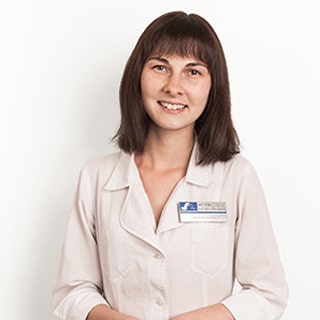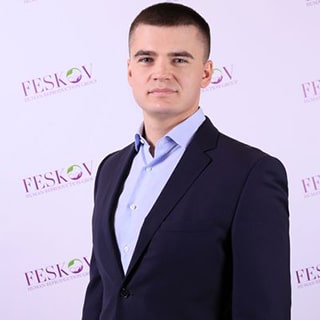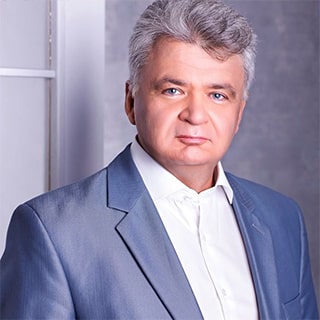
- What are stem cells?
- Attitudes to stem cell treatment
- How do stem cells work?
- Stem cell sources
- Effective use of stem cells in IVF
- Stem cell treatment for endometrial problems
- Stem cell treatment for premature ovarian failure
- Stem cell treatment of male infertility
Surrogacy center and clinic for Human Reproduction of professor Feskov are one unit
IVF program with surrogacy and oocyte donation provided without intermediate parties at a special price for the entire year.
It is believed that medicine is not an exact science. However, thanks to advances in biology, cryobiology, and a technological breakthrough in the industry of biotechnologies, the medical part of the surrogacy program and oocyte donation has seen progress, which can be calculated mathematically.
So, today, for the birth of a child via the IVF program, we only need one thing, which is the quality of the egg and sperm.
Of course, couples who seek help do not always have high parameters of their reproductive potential. Success depends by 20 % on the readiness of the embryo implantation site, the uterus, and by 80 % on the quality of the embryo.
In surrogacy programs, our own methods of endometrium preparation on the basis of world experience allow fully preparing a surrogate mother for the transfer.
Today, the whole world came to the conclusion that the main thing in the IVF program is not technology, but age! Nothing affects the quality of the embryos as age does. That is why we pay great attention to choosing the best embryos to induce pregnancy from the first try.
The TimeLapse technology allows determining the quality of the embryo: a computer tracks the course of cell division and recommends the best embryo for transfer; preimplantation genetic diagnosis by array-CGH/NGS methods allows defining the embryo with balanced chromosome set, which is important for couples over 35 years.
The effectiveness of the IVF program in the Center for Human Reproduction Clinic of professor Feskov is due to the following parameters:
- embryo transfer in the cycle of ovulation stimulation in couples younger than 35 years — 45-60 %.
- embryo transfer in the cycle of ovulation stimulation in couples older than 35 years — 25-38 %.
- embryo transfer after the preimplantation genetic diagnosis — 65-84%.
Today, the IVF program allows not only overcoming infertility, but also fulfilling the following of your wishes:
- Choosing the future child’s sex. Ukrainian legislation allows choosing the sex of the baby using preimplantation genetic diagnosis.
- Choosing the healthy embryo: the full genomic screening, identification of the complete chromosome set.
- Overcoming monogenic diseases: definition of carriers of monogenic diseases in the embryo for the further selection of the healthy embryo for transfer.
Service benefits

Increased Embryo Survival Rates

Enhanced Fetal Development

Reduced Risk of Pregnancy Complications

Improved Implantation and Pregnancy Rates
What are stem cells?
Stem cells are immature cells that can turn into various types of cells in organs and tissues. This means that it is possible to grow new tissue in the body from stem cells and restore some processes.
Despite the fact that stem cells are able to maintain their numbers by dividing with age, their number in the body decreases and irreversible aging processes occur in the body.
The use of stem cells has become widespread in the treatment of infertility in women and men, in assisted reproductive technology programs, including achievement of reproductive success.
Feskov Human Reproduction Group is unique in this industry due to the fact that people from the Institute of Cryobiology and Cryomedicine of the National Academy of Sciences of Ukraine have become our honored biologists who have been working with stem cells for 40 years and have experience in their use in clinical practice.
Attitudes to stem cell treatment
In the world very differently, depending on laws and countries, relate to methods of treating various diseases with stem cells.
In many ways, the moral and ethical standards of a particular state have a significant negative impact on the development of this field of medicine.
In Ukraine, stem cell treatment is strictly regulated by law and is used in various fields of medicine.
Here we want to provide you with information on how stem cells help men and women to become parents, even in cases that seemed previously hopeless.
Available in packs
How do stem cells work?
First of all, let's find out where we get stem cells from.
Stem cell sources
The following stem cell sources are used in the world:
- stem cells of adipose tissue or peripheral blood
- cord blood mesenchymal stem cells
- stem cells from amniotic fluid
Most stem cells are contained in cord blood, as during the period of fetal development, it is they who participate in the formation of internal organs, skin, blood vessels and all other tissues of the child.
Adult adipose tissue or peripheral blood can also produce stem cells that can benefit their owner.
After that, stem cells are isolated from the obtained material in the laboratory, which can also be frozen in liquid nitrogen and stored in a cryobank for an unlimited amount of time, so that they can be used at the right time.
When they enter the human body, they begin to perform their main function - to build those tissues that the body needs.
Depending on the disease experienced by the person, the localization of the introduction of a dose of stem cells is selected.
Effective use of stem cells in IVF
There are three main applications of stem cell treatment:
Stem cell treatment for endometrial problems
It happens that with ideal embryos pregnancy does not occur due to the fact that there are serious problems with the endometrium, the inner layer of the uterus, that prevent successful implantation.
These include the following:
- thin endometrium
- Asherman's syndrome
- repeated unsuccessful embryo transfer of high quality embryos with proven genetics
- loss of physiological function due to age, manipulations (surgical interventions, curettage, abortion),
- lack of progesterone receptors for implantation.
How is the treatment going?
- Thanks to assisted reproductive technologies, we create a healthy embryo, on which 80% of success depends.
- Then we collect adipose tissue or peripheral blood from a woman after stimulation with medications that release the maximum number of stem cells.
- We select the stem cells and inject the appropriate dose into the body of a woman.
Localization depends on individual medical indicators, as well as the desired goal. - Further, after a certain period of time, your endometrium begins to grow to the size necessary for the successful transfer of embryos.
The methodology is not currently standardized procedure worldwide. The result of such treatment within the framework of guaranteed packages of the Feskov Human Reproduction Group can be only the achievement and progression of pregnancy.
Our experts



Detailed
Stem cell treatment for premature ovarian failure
The problem with the ovaries and the inability to get their own eggs to conceive a child haunts many women of reproductive age.
If a woman is recommended to take only donor eggs, but she is not ready to give up, because wants to become a mother of a genetically native child, there is an option for stimulating the ovaries with stem cells.
Stem cells are used in special preparation of the ovaries before stimulation, for women of reproductive age who, for some unknown reason, have resistant ovary syndrome or premature ovarian failure syndrome.
In these cases, we use cells of both autologous origin and embryonic origin. It all depends on what cell composition you will need for successful treatment, as well as what dose of cells can be obtained from your own tissues and your blood.
The option of injection depends on your anamnesis, the severity of ovarian resistance, which is determined by a simple blood test for hormones.
Stem cell therapy results will be visible at least three months later.
This period is necessary in order for the follicles from the microscopic stages of development to reach the antrum.
Stem cell treatment of male infertility
Stem cells are used for men with severe reproductive disorders, for example, the diagnosis of azoospermia, in which there are no sperm in the ejaculate.
We also get stem cells from blood or adipose tissue. It is important to pay attention to the age of the man, because every year in our body there is less and less stem cells.
We process the obtained biological material in the laboratory, isolating the necessary cells.
Then, we inject the resulting preparation intravenously or directly into the testicular tissue in order to restart the sperm production of cells.
In parallel, standard treatment methods for azoospermia are carried out:
- hormonal and non-hormonal stimulation,
- antioxidant therapy,
- other additional treatments for azoospermia.
Of course, stem cell treatment is not a panacea, and today it is in its infancy for widespread use in reproductive medicine.
Each case is individual, so the choice of certain methods depends on a personal anamnesis, previous treatments, qualifications and experience of the clinic of reproductive medicine that you are contacting.
We at Feskov Human Reproduction Group are confident that there are no hopeless situations and that is why we offer our patients programs with a guaranteed result - the birth of a child.
This is possible thanks to a personal choice of services specifically for your situation.
Our Customer Service Representatives are eager to help you with whatever you need.
With us you can use the most advanced reproductive technologies at affordable prices and make your dream of a child's birth a reality!
You can get detailed information about the service from the manager by filling out the form on the website.
Or in another way convenient for you
Can stem cells help you get pregnant?
read moreStem cells cannot help you get pregnant. They can increase the likelihood of pregnancy. Thanks to them, the key indicators necessary for pregnancy are improved: the implantation potential of the endometrium, the quality of spermatozoa. And they also affect the regulation of folliculogenesis for subsequent stimulation of ovulation and the number of eggs obtained. And all this only with their correct and appropriate use. We have mastered this technology to perfection.How does surrogate mother get pregnant?
read moreThe surrogate mother's own ovulation is medically turned off. Then she takes hormones to build up the endometrium of the uterine lining. This allows you to exclude the occurrence of her own pregnancy and helps the successful transfer of an embryo from genetic parents (this painless medical procedure is performed according to the biological calendar of the surrogate mother).How is ICSI different from IVF?
read moreICSI is individual fertilization of an egg with a selected sperm. This is a complex embryological procedure. In IVF, a large number of sperm cells are immediately implanted to the egg. This is a random result, which sperm will fertilize the egg.Who can benefit from IVF?
read more1 - It can be useful for those who need a child and have problems with conception. 2 - for those who want to choose the gender of the future child. 3- if necessary, exclude hereditary diseases in the family
